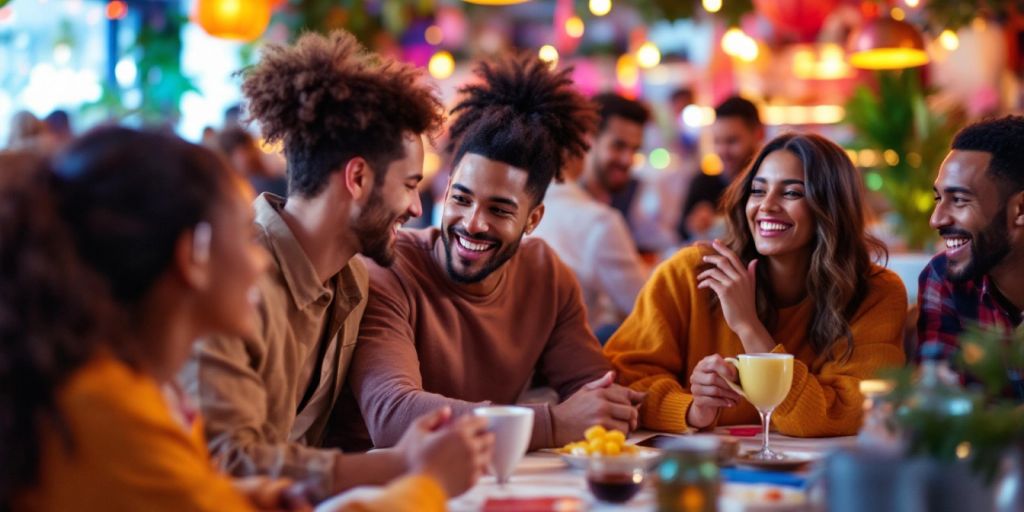The Rising Importance of Influencer Marketing in 2024
Why Brands Are Investing More in Influencer Marketing
In 2024, brands are realizing that influencer marketing is essential for reaching their target audiences. With over 82% of marketers in the U.S. planning to use influencers, it’s clear that this strategy is gaining traction. Influencers help brands build social proof, which is crucial for boosting sales.
The Shift from Traditional to Digital Influence
The marketing landscape is changing. Instead of relying on traditional ads, brands are turning to influencers who connect with their audiences on platforms like Instagram and TikTok. This shift allows brands to engage with consumers in a more authentic way, leading to better results.
Key Statistics Highlighting the Growth
Here are some key statistics that show the growth of influencer marketing:
| Statistic | Value |
|---|---|
| Percentage of marketers using influencers | 82% |
| Increase in influencer marketing budgets | 60% |
| Expected ROI from influencer campaigns | 11 times the investment |
Influencer marketing is a powerful tool that can help brands connect with their audience in a meaningful way.
In summary, as we move into 2024, the importance of influencer marketing will only continue to rise, making it a vital part of brand strategies.
Harnessing AI for Influencer Discovery and Campaign Optimization
AI-Powered Tools for Identifying Influencers
Finding the right influencer can be tough, but AI is changing the game. With tools that analyze data, brands can now discover influencers who match their target audience perfectly. For example, platforms like Tagger have a database of over 10 million influencers, making it easier to find the right fit for your campaign.
Optimizing Campaigns with Data-Driven Insights
AI doesn’t just help in finding influencers; it also optimizes campaigns. By using data, brands can see what works and what doesn’t. This means they can adjust their strategies in real-time, leading to better results. For instance, at Popular Pays, AI is integrated to streamline processes and improve targeting, ensuring campaigns perform at their best.
Case Studies of Successful AI-Driven Campaigns
Many brands are already seeing success with AI in their campaigns. Here are a few examples:
- Brand A used AI tools to identify micro-influencers, resulting in a 30% increase in engagement.
- Brand B optimized their content strategy using AI insights, leading to a 25% boost in sales.
- Brand C implemented AI-driven analytics, which improved their campaign performance by 40%.
In 2024, AI will be essential for brands looking to enhance their influencer marketing strategies. It’s not just about finding influencers; it’s about making smarter decisions that lead to success.
By harnessing AI, brands can unlock new levels of efficiency and effectiveness in their influencer marketing efforts, ensuring they stay ahead in a competitive landscape.
The Role of Micro-Influencers in Niche Marketing

Why Micro-Influencers Are Gaining Popularity
Micro-influencers are becoming essential for brands looking to penetrate niche markets. When startups choose the right micro-influencers, they can significantly boost their visibility. Unlike macro-influencers, micro-influencers have smaller but highly engaged audiences, making their recommendations feel more personal and trustworthy.
Building Authentic Connections with Niche Audiences
Micro-influencers excel at creating genuine connections with their followers. They often share content that resonates deeply with specific interests, leading to higher engagement rates. Here are some reasons why brands should consider micro-influencers:
- Cost-Effective: Brands can collaborate with multiple micro-influencers for the price of one macro-influencer, reaching diverse audiences.
- Higher Engagement: Micro-influencers typically have better engagement rates, which translates to more interaction with the brand.
- Trust and Authenticity: Their followers often view them as relatable figures, leading to more authentic recommendations.
Examples of Effective Micro-Influencer Campaigns
- Beauty Brands: A skincare company partnered with several micro-influencers to promote a new product line, resulting in a 30% increase in sales within a month.
- Fitness Products: A fitness brand collaborated with micro-influencers in the health niche, leading to a 50% boost in online engagement and a significant rise in brand awareness.
- Local Restaurants: A local eatery invited micro-influencers to try their menu, which resulted in a surge of foot traffic and social media buzz.
Micro-influencers are not just a trend; they are a powerful tool for brands aiming to connect with specific audiences and build lasting relationships.
By leveraging the unique strengths of micro-influencers, brands can create impactful marketing strategies that resonate with their target audiences.
Leveraging User-Generated Content for Brand Engagement
How Influencers Inspire User-Generated Content
User-generated content (UGC) is a game-changer for brands. It allows consumers to become part of the brand story. Influencers encourage their followers to share their experiences, creating a sense of community. Here are some ways influencers inspire UGC:
- Challenges: Influencers create fun challenges that encourage followers to participate and share their content.
- Giveaways: By offering prizes, influencers motivate their audience to create and post content related to the brand.
- Collaborative Campaigns: Influencers invite their followers to join in on campaigns, making them feel included.
The Benefits of User-Generated Content for Brands
UGC offers numerous advantages for brands:
- Authenticity: Content created by real users feels more genuine than traditional ads.
- Trust: Consumers trust recommendations from fellow users more than from brands.
- Engagement: UGC fosters a deeper connection between the brand and its audience.
Strategies for Encouraging User Participation
To effectively encourage UGC, brands can:
- Feature Followers: Highlight user content on brand pages to motivate others.
- Create Hashtags: Develop unique hashtags for campaigns to track and promote UGC.
- Engage with Users: Respond to and share user content to build a community.
In 2024, leveraging UGC will be essential for brands looking to enhance engagement and build trust with their audience. By making consumers feel valued, brands can turn them into loyal advocates.
The Impact of Video and Live Streaming in Influencer Marketing
Why Video Content Dominates Social Media
Video content is taking over social media, and brands are paying attention. In 2024, 53% of businesses plan to invest more in video marketing, recognizing its power to engage audiences. Influencers who create both short and long videos can connect with their followers in unique ways.
- Short-form videos grab attention quickly.
- Long-form videos allow for deeper storytelling.
- Live streaming creates real-time interaction.
Live Streaming as a Tool for Real-Time Engagement
Live streaming is becoming a game-changer for brands. It allows influencers to showcase products live, answer questions, and drive immediate sales. This format builds trust and urgency, making it perfect for impulse buys.
For example, during a live shopping event, influencers can demonstrate products and engage with viewers, turning them into buyers on the spot. This method is effective because it combines entertainment with shopping, creating a fun experience.
Tips for Creating Compelling Video Content
To make the most of video marketing, brands should focus on:
- Collaborating with skilled influencers who can create engaging content.
- Using a mix of video types to reach different audiences.
- Encouraging audience interaction through polls and Q&A sessions.
Video and live streaming are not just trends; they are essential tools for building connections and driving sales in 2024.
In summary, the impact of video and live streaming in influencer marketing is profound. Brands that embrace these formats will likely see increased engagement and sales, making them a vital part of future marketing strategies.
Sustainable and Socially Responsible Influencer Collaborations
The Rise of Socially Conscious Influencers
In 2024, sustainability is more than a trend; it’s a movement. Brands are increasingly partnering with influencers who advocate for ethical practices and environmental awareness. These collaborations not only enhance brand image but also resonate with consumers who prioritize social responsibility.
Promoting Sustainability Through Influencer Partnerships
Brands can effectively promote their commitment to sustainability by collaborating with influencers who share their values. Here are some effective strategies:
- Highlight eco-friendly products: Showcase items that are sustainably sourced or produced.
- Support social causes: Partner with influencers who are involved in charitable initiatives.
- Engage in community projects: Work together on campaigns that benefit local communities.
Case Studies of Successful Social Responsibility Campaigns
Several brands have successfully leveraged influencer partnerships to promote sustainability:
- Patagonia: Collaborated with eco-conscious influencers to promote their "Don’t Buy This Jacket" campaign, encouraging consumers to think before they purchase.
- TOMS: Partnered with influencers to raise awareness about their one-for-one model, where every purchase helps someone in need.
- Lush: Worked with beauty influencers to promote their naked packaging products, emphasizing waste reduction.
By aligning with influencers who are passionate about sustainability, brands can create authentic connections with their audience and drive meaningful change in 2024.
Conclusion
In a world where consumers are more aware of their choices, brands must embrace sustainable collaborations to stay relevant. The future of influencer marketing lies in partnerships that reflect genuine values and commitment to social responsibility.
The Future of Virtual and Augmented Reality in Influencer Marketing

How VR and AR Are Changing the Marketing Landscape
Virtual Reality (VR) and Augmented Reality (AR) are becoming the new frontier in influencer marketing. These technologies allow brands to connect with consumers in exciting and immersive ways. For example, brands can create virtual try-ons for products, letting customers see how items look before buying. This not only enhances the shopping experience but also increases engagement.
Creating Immersive Experiences with VR and AR
Influencers are using VR and AR to create unique experiences that captivate their audiences. Here are some ways they are doing this:
- Interactive product demonstrations that allow users to engage with products in a virtual space.
- Live events in virtual environments where followers can participate in real-time.
- Storytelling through immersive content that draws viewers into the brand’s narrative.
Examples of Innovative VR and AR Campaigns
Several brands have successfully integrated VR and AR into their marketing strategies:
- Prada launched a fragrance with a virtual model, enhancing brand storytelling.
- M&S created a CGI influencer on Instagram, showcasing products in a fresh way.
- IKEA offers an AR app that lets customers visualize furniture in their homes before purchasing.
The rise of VR and AR in influencer marketing is reshaping how brands engage with their audience, making interactions more memorable and impactful.
As we move into 2024, the potential for these technologies in influencer marketing is vast, promising a future where brands can create deeper connections with consumers through innovative experiences.
Measuring ROI and Performance in Influencer Marketing
The Importance of ROI Measurement
Measuring ROI is crucial for understanding the effectiveness of influencer marketing campaigns. In 2024, brands are focusing on conversions and sales as key success metrics. For instance, 46% of marketers prioritize conversions, while 44% focus on sales. This shift highlights the need for clear goals and measurable outcomes.
Tools and Metrics for Tracking Performance
To effectively measure ROI, brands should consider the following tools and metrics:
- Analytics Platforms: Use tools like Google Analytics to track website traffic from influencer campaigns.
- Engagement Metrics: Monitor likes, shares, and comments to gauge audience interaction.
- Conversion Tracking: Set up tracking for sign-ups or purchases directly linked to influencer promotions.
| Metric | Description | Importance |
|---|---|---|
| Reach | Total number of unique viewers | Brand awareness |
| Engagement Rate | Likes, comments, shares per post | Audience interest |
| Conversion Rate | Percentage of users taking desired action | Campaign effectiveness |
Improving Campaigns Based on Data Insights
Brands should regularly analyze data to refine their strategies. Here are steps to enhance future campaigns:
- Set Clear Goals: Define what success looks like for each campaign.
- Choose Key Metrics: Focus on metrics that align with your goals, such as engagement or sales.
- Assess Campaign Costs: Calculate the total investment to determine profitability.
- Calculate Profit: Subtract costs from revenue generated to find the ROI.
Understanding and measuring ROI in influencer marketing is essential for brands to optimize their strategies and ensure successful collaborations. By focusing on data-driven insights, brands can make informed decisions that lead to better outcomes.
Building Long-Term Partnerships with Influencers
The Benefits of Long-Term Collaborations
Quick influencer campaigns might bring a short-term buzz, but long-term partnerships build trust, loyalty, and serious engagement. Brands are realizing that sustained collaborations allow influencers to become genuine advocates for their products. Here are some key benefits:
- Trust and Loyalty: Influencers can create authentic content that resonates with their audience over time.
- Consistent Messaging: Long-term partnerships ensure that brand messages are reinforced consistently.
- Deeper Connections: Influencers can develop a stronger relationship with their followers, leading to higher engagement.
Strategies for Maintaining Influencer Relationships
To keep these partnerships thriving, brands should focus on:
- Aligning Creators with Your Content Strategy: Ensure that the influencer’s style matches your brand’s voice.
- Defining Roles Clearly: Provide comprehensive style guides to help influencers understand expectations.
- Regular Communication: Keep the lines open for feedback and new ideas.
Examples of Successful Long-Term Partnerships
Several brands have successfully built long-term relationships with influencers:
- Nike and Serena Williams: Their collaboration has evolved over the years, showcasing authentic stories that resonate with fans.
- Coca-Cola and Influencers: By partnering with various influencers for ongoing campaigns, Coca-Cola maintains a fresh and engaging presence.
- Glossier and Beauty Influencers: Glossier has cultivated relationships with beauty influencers who genuinely love their products, leading to authentic endorsements.
Building long-term partnerships is not just about contracts; it’s about creating a community where both brands and influencers can thrive together.
The Evolution of Authenticity in Influencer Marketing
Why Authenticity Matters More Than Ever
In 2024, authenticity is the cornerstone of successful influencer marketing. Audiences are increasingly skeptical of traditional advertising, making it essential for brands to connect with influencers who genuinely reflect their values. This shift is driven by a desire for real connections, as consumers are more likely to trust recommendations from influencers they admire rather than from brands directly.
Finding Influencers Who Align with Brand Values
To ensure authenticity, brands should:
- Research influencers’ backgrounds and values.
- Engage with influencers who have a genuine passion for the brand’s mission.
- Allow influencers creative freedom to express their unique voice.
Allowing Creative Freedom for Genuine Content
When brands give influencers the space to create content that resonates with their audience, it fosters a sense of trust and loyalty. For example, a beauty brand collaborating with a skincare influencer who shares personal stories about their skin journey can create a more relatable and impactful message.
Authenticity is not just a trend; it’s a necessity for building lasting relationships with consumers.
In summary, as we move into 2024, brands must prioritize authenticity in their influencer partnerships. By focusing on genuine connections and allowing creative expression, they can build trust and drive engagement in a crowded marketplace. The evolution of influencer marketing is all about creating meaningful relationships that resonate with audiences.
Social Commerce: The Intersection of Influencer Marketing and E-Commerce
How Influencers Drive Online Sales
Influencers are transforming the way brands sell products online. They create engaging content that connects with their followers, making it easier for brands to reach potential customers. Here are some ways influencers drive sales:
- Authentic Recommendations: Followers trust influencers, leading to higher conversion rates.
- Live Shopping Events: Real-time interactions create urgency, encouraging immediate purchases.
- Exclusive Offers: Influencers often share special discounts, enticing followers to buy.
Integrating Social Commerce into Marketing Strategies
To effectively leverage social commerce, brands should:
- Choose the Right Influencers: Partner with those who align with your brand values.
- Utilize Multiple Platforms: Don’t just stick to Instagram; explore TikTok, BeReal, and others.
- Create Engaging Content: Use videos and live streams to showcase products in action.
Case Studies of Successful Social Commerce Campaigns
Several brands have successfully integrated influencer marketing with e-commerce:
- Fashion Nova: Utilizes influencers to showcase outfits, leading to a significant increase in online sales.
- Glossier: Engages beauty influencers to create authentic content, driving traffic to their website.
- Gymshark: Hosts live shopping events with fitness influencers, resulting in high conversion rates.
Social commerce is not just a trend; it’s the future of shopping. Brands that adapt will thrive in the evolving market.
Adapting to Emerging Trends in Influencer Marketing
Staying Ahead of the Curve with Trend Analysis
To thrive in the fast-paced world of influencer marketing, brands must keep an eye on emerging trends. Understanding these trends is crucial for success. Here are some key areas to focus on:
- Micro and Nano-Influencers: These influencers are gaining traction due to their authentic connections with niche audiences. They often yield higher engagement rates compared to larger influencers.
- Short-Form Video Content: Platforms like TikTok and Instagram Reels are dominating. Brands should collaborate with influencers who excel in creating engaging video content.
- AI-Powered Tools: Utilizing AI can streamline influencer discovery and campaign optimization, making it easier to find the right match for your brand.
Experimenting with New Platforms and Formats
Brands should not shy away from experimenting with new platforms and content formats. Here are some strategies:
- Explore Emerging Platforms: Keep an eye on new social media platforms that may attract younger audiences.
- Innovative Content Formats: Try interactive content like polls, Q&As, or live streams to engage followers.
- Collaborate with Diverse Influencers: Work with influencers from various backgrounds to reach a broader audience.
Learning from Industry Leaders and Innovators
Observing successful brands can provide valuable insights. Consider these examples:
- Nike: They effectively use micro-influencers to promote niche products, creating a sense of community.
- Glossier: This beauty brand leverages user-generated content to enhance authenticity and engagement.
- Coca-Cola: Their campaigns often feature diverse influencers, showcasing their commitment to inclusivity.
Adapting to trends in influencer marketing is not just about keeping up; it’s about leading the way. Brands that embrace change will connect better with their audiences and drive engagement.
In today’s fast-changing world of influencer marketing, it’s important to keep up with new trends. Brands need to adapt quickly to stay relevant and connect with their audience. If you’re looking to enhance your marketing strategy and reach more customers, visit our website for expert guidance and support!






